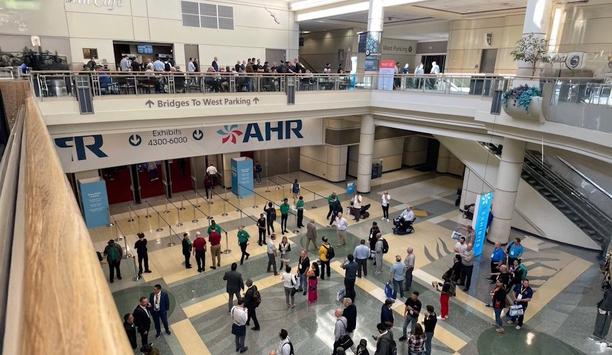A quick glance at official COVID-19 mitigation guidance reveals that it promotes increased ventilation air change rates, as the most effective way to keep people safe. Sounds easy, doesn’t it? Just open a window or turn up your ventilation system, if you have one. The fact is, however, that the vast majority of domestic properties in Britain does not have a mechanical ventilation system and rely on natural means for background ventilation, including windows, trickle vents or air bricks. In short, homeowners or tenants must physically open windows, after having decided whether they want to.
This is an imperfect system for several reasons. Firstly, cold or wet weather might lessen an open window’s appeal and secondly, natural ventilation is a weather dependent process, as sometimes there’s simply no air movement. In other words, a natural ventilation strategy does not guarantee effective ventilation. With an airborne virus still being transmitted across the country, it’s important to understand the best options available to combat the spread.
Building to minimum standards
Building using a strategy that comprises natural background ventilation is the simplest, easiest and cheapest method of compliance to Part F: Building Regulations. That’s why it is the most common. We call this building to ‘minimum standards’. The problem with this approach, which is perfectly legal and entirely acceptable to Building Control, is that it often leads to problems caused by insufficient ventilation, such as condensation, mould, dust mites and odors, once the building is occupied.
This issue has been made far worse, in recent years, since we committed to the 2050 Climate Change Targets
This issue has been made far worse, in recent years, since we committed to the 2050 Climate Change Targets and started retrofitting insulation improvements to millions of existing properties. Our already well-sealed properties were sealed up even further, thereby causing all the moisture and pollutants produced by the occupancy to stay in the house, unless ventilated away.
Pros and cons of positive input ventilation
Positive input ventilation (PIV) is a highly effective means of dealing with such issues. PIV systems can be retrofitted into existing buildings, in order to improve the rate of background ventilation and eliminate the problems mentioned earlier. PIV is widely accepted in social and private housing, because it is unobtrusive, not behavior dependent, easy to install, highly cost effective and improves building energy efficiency.
PIV can, therefore, help increase air change rates for naturally ventilated buildings. Unfortunately, however, new problems can emerge through the use of such systems. Increasing ventilation can create thermal comfort problems, leading to expensive heating bills and uncomfortable occupants.
Rise in outdoor pollution ingress
It can also increase outdoor pollution ingress, which, in turn, can exacerbate health issues and lead to deadly asthma triggers, as confirmed by the ruling in the Ella Kissi-Debrah inquest. In short, PIV and other ventilation strategies, despite comprising filtration, can still let pollutants in.
On top of these issues is viral particles emitted indoors, a key concern in the current climate, which can be displaced faster by more air changes and are not easily destroyed. This arguably means the rate of transmission remains high. What is needed is a retrofit solution that achieves all the benefits of PIV, while removing and destroying indoor and outdoor pollutants, including viral/microbials. Active PIV is that solution.
Active PIV: A huge step forward
Active PIV with Photohydroionisation (PHI) increases fresh air ventilation air change rates
Active PIV with Photohydroionisation (PHI) increases fresh air ventilation air change rates, thus reducing indoor humidity and providing safe, and effective active air purification throughout the indoor environment.
Most importantly, it complies with COVID-19 mitigation guidance and removes, and destroys pollutants from both indoor and outdoor sources, including odors, VOCs, radon and other gases, allergens, such as pollens, mould, pet dander and dust mite faecal matter, particulates, including smoke or traffic soot, and viral/bacterial emissions, including SARS-CoV-2, at the point of transmission.
This level of protection is not possible with increased ventilation alone or passive air treatments, such as filtration, UV, PCO, or ionization. Active PIV, therefore, provides an extra layer of indoor protection, over and above PIV that is continuous and not behavior dependent.
PHI technology delivers active air purification
The PHI technology that delivers active purification essentially mimics Earth’s natural air cleaning processes. Minute concentrations of ionized hydro peroxides are created, whenever there is sunlight, water vapor and oxygen present.
These active molecules break down and destroy pollutants on contact, and revert back to water vapor and oxygen afterwards. Active PIV recreates this process in an indoor setting, constantly replenishing new active molecules to replace the spent ones. It is perfectly safe to breathe and effective against all three categories of indoor air pollutants, including:
- Particulates
- Microbial
- Gases
Active PIV to counter COVID-19 pandemic
Active PIV is the perfect innovative response to the COVID-19 pandemic. It can be easily and quickly retrofitted, and its effect is instant. For social housing managers, it delivers the best possible protections to the indoor spaces, which are occupied by the tenants for whom they are responsible.
In terms of both its innovation and effects, Active PIV technology is the breath of fresh air that the ventilation industry and a pandemic-stricken world sorely needs.




















